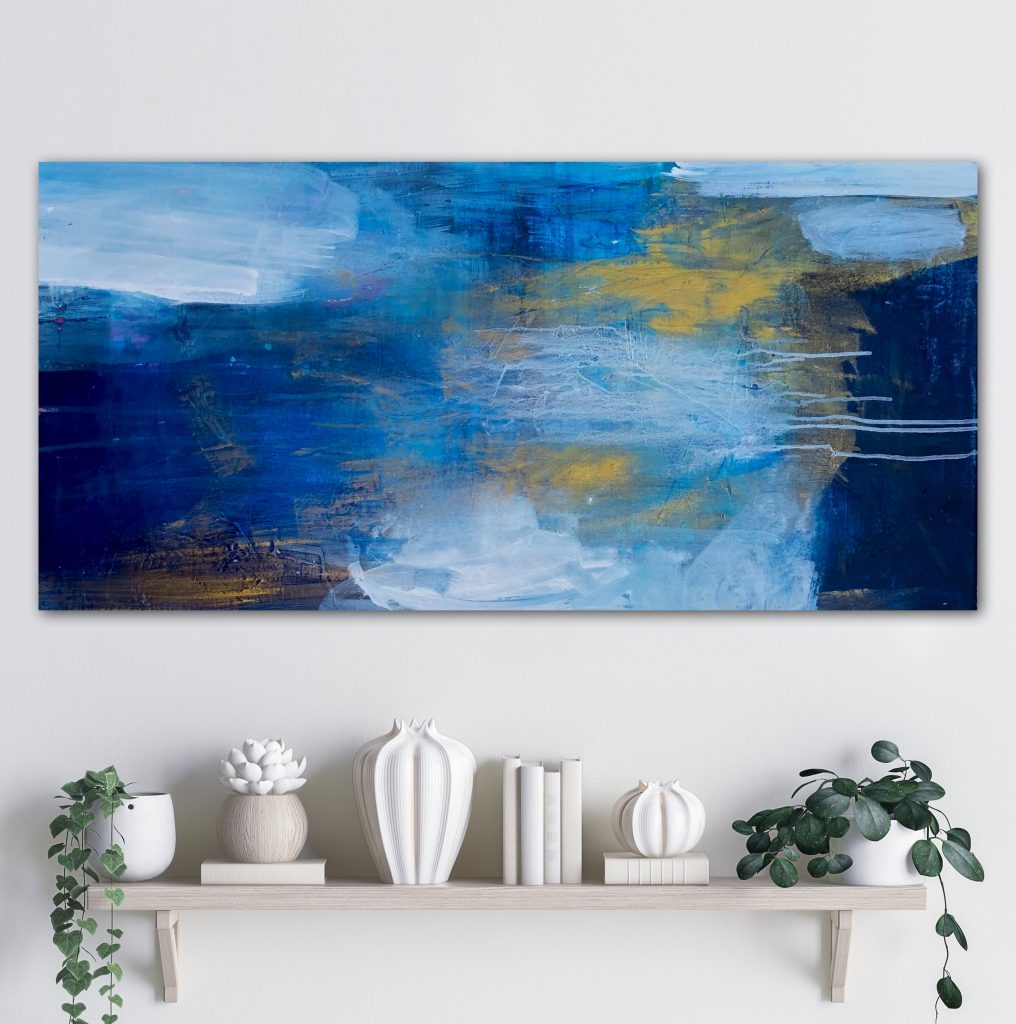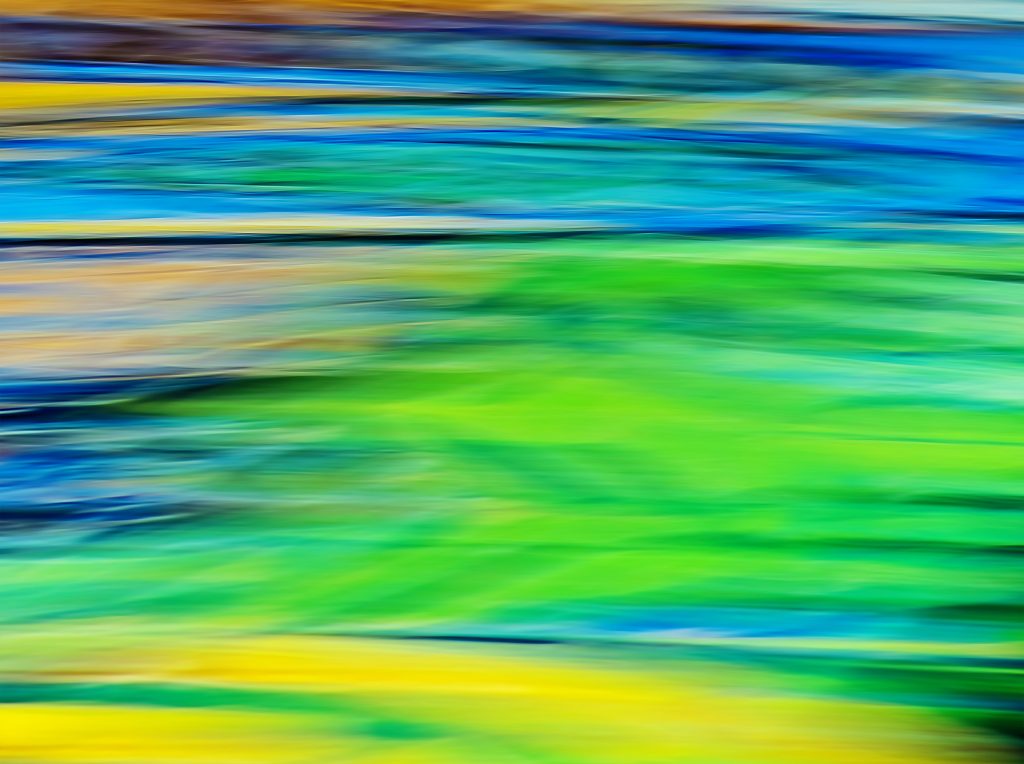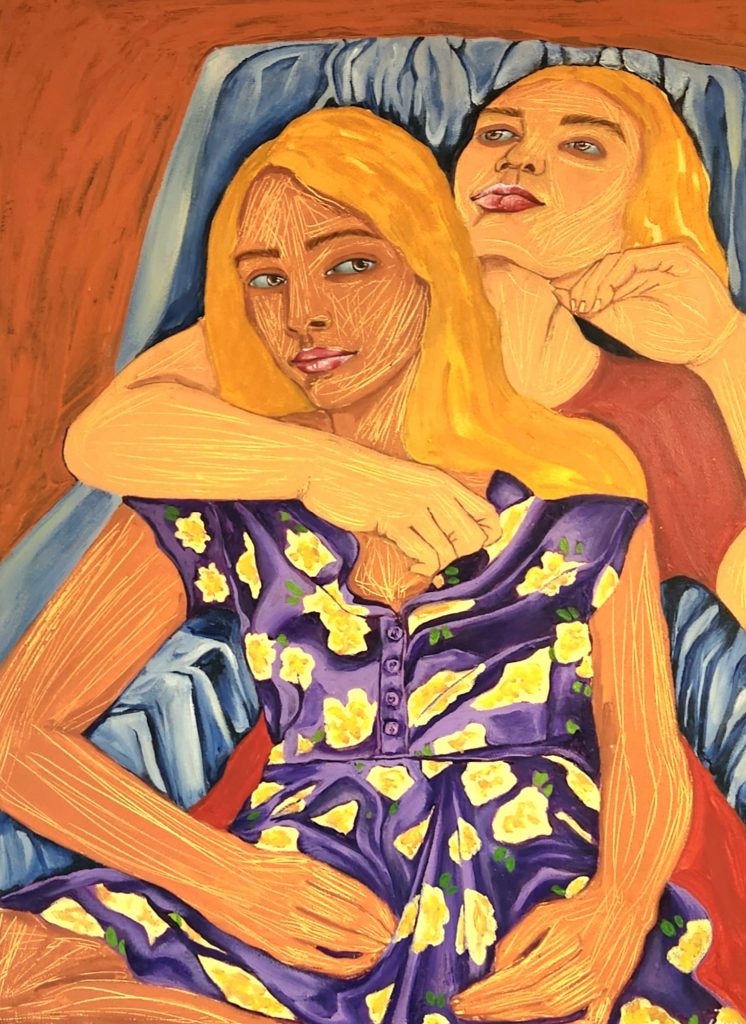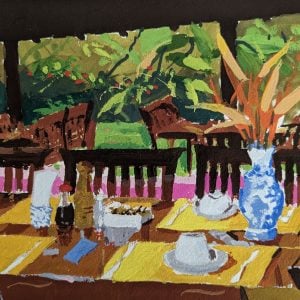The Psychology of Colour in Art
Since discovering its aesthetic charm, humans have used colour to decorate their daily life. But is there more to coloured paint than its vibrant visual appeal? In this blog, we dive into the psychology of colour, examining the relationship between colour and emotions. Plus, see this week’s curation, Colour Psychology: An Artwork for Every Mood. Flick through and experience the full effect of colour, with each page of this curation dedicated to a different hue!
Colours are a powerful instrument in the hands of Port Douglas-based artist Cheryl Harrison. “I’ve had people in my studio in tears when they’ve found the piece they’ve been looking for, and the palette has played a major role in these connections. It’s wonderful to witness such an authentic reaction to something you have created,” said Cheryl.
When Isaac Newton discovered the seven-colour spectrum in the 1660s, it gave humans a deeper understanding of colour. Over time, people have gradually realised the influence of colour on people’s psyche, and thus, Colour Psychology was born. The psychology of colour explores how different hues and shades affect human behaviour, emotions, and perception. It suggests that the colours used in an artwork can significantly affect our emotional responses and impact how we interpret a painting.

Newton by Brad Holland is a spectrum of colour constructed with over 100 layers of meticulously blended acrylics.
Artists Use Colour to Influence Your Mood
Like Cheryl, many artists purposefully select colours to harness their expressive qualities and create impactful artworks. Cheryl describes this conscious painting practice as walking on a tightrope without a balancing pole. “I must constantly circle back to the key question: What am I trying to evoke, and how best can colour help me get there?”
Whilst the psychology of colour is in its infancy, many exciting theories have emerged. For example, psychologists Andrew Elliot and Markus Maier theorise that humans’ response to colour is innate, reinforced, and shaped by social learning. Their Colour-in-context theory realises that a person’s age, cultural background, and life experiences can influence their psychological reaction to colour. Assigning psychological responses to paint colour isn’t black and white, but common associations prevail.
Red
Red is a bold, intense, passionate colour that symbolises powerful emotions such as anger, danger, strength, and love. Many cultures and societies associate it with excitement, intensity, and energy. Red artwork never fails to evoke a strong emotional response. “Occasionally, I will approach a piece, such as Reach, with the palette revolving around one colour. In this instance, red. Everything else takes on a supporting role. I wanted to create a powerful, uplifting piece about striving beyond limitations. For me, nothing quite does that like red,” said Cheryl.

Reach by Cheryl Harrison.
Blue
Blue is a colour that commonly inspires a sense of calmness, peace, and confidence within those who observe it. This was particularly evident in 2022, when large-scale blue abstract paintings were a favourite among our collectors. The soothing quality of blue artwork can create a sense of serenity, making it a popular choice for those seeking to create a relaxing atmosphere within their homes or workspaces.

Letting Go by Carmel Reilly.
Green
Green is associated with abundant growth, prosperity, and fertility. Its presence in the natural world, such as lush forests, fields, and gardens, evokes a serene feeling that correlates with positivity and happiness. Green artwork can boost confidence, inspire creativity, and promote inner harmony. Green artwork can trigger feelings of optimism and joy, making it a popular choice for uplifting and refreshing settings.

Forest Reflection by Bruce Peebles.
Orange
The colour orange is a symbol of warmth that is associated with feelings of freedom. Many people find that orange artwork also sparks their creativity, providing a burst of energy that helps them think outside the box and develop new and innovative ideas. Orange is a motivating colour because its optimistic, upbeat vibe inspires people to take action and chase their dreams.

The Refuge by Anahita Amouzegar.
Black
Black artwork can evoke strong emotions in the viewer, including a sense of power. Considered a symbol of mystery and intrigue, the colour black also represents elegance and sophistication. Whether used sparingly or liberally, black can also exhibit professionalism, neutrality, and simplicity. As such, black can be both a versatile and powerful tool in the hands of artists.

Echoes In The Dark by Taylor Hill.
Colour can express and inspire a wide range of human emotions. Check out this week’s curation and explore Colour Psychology: An Artwork for Every Mood. Experience the full psychological effect with each page of this curation dedicated to a different colour!











